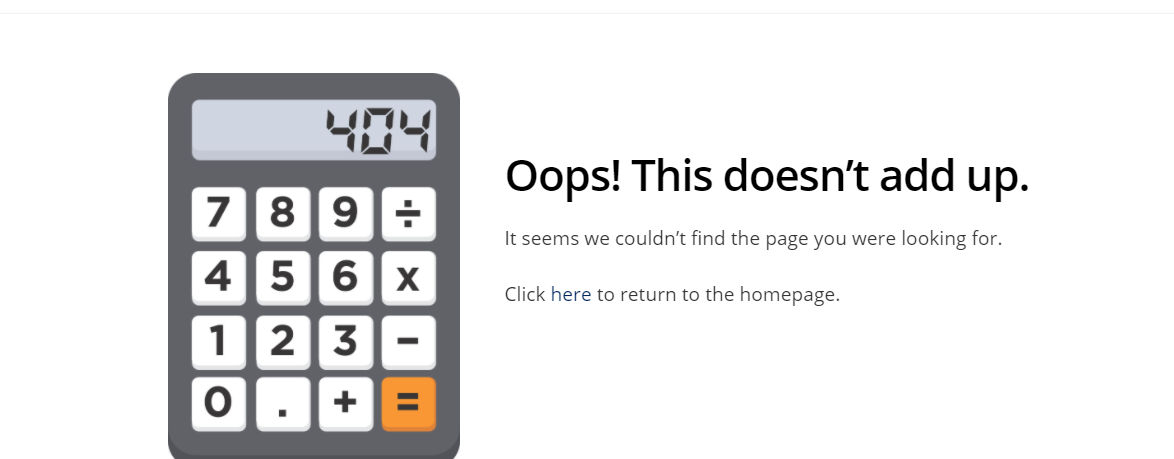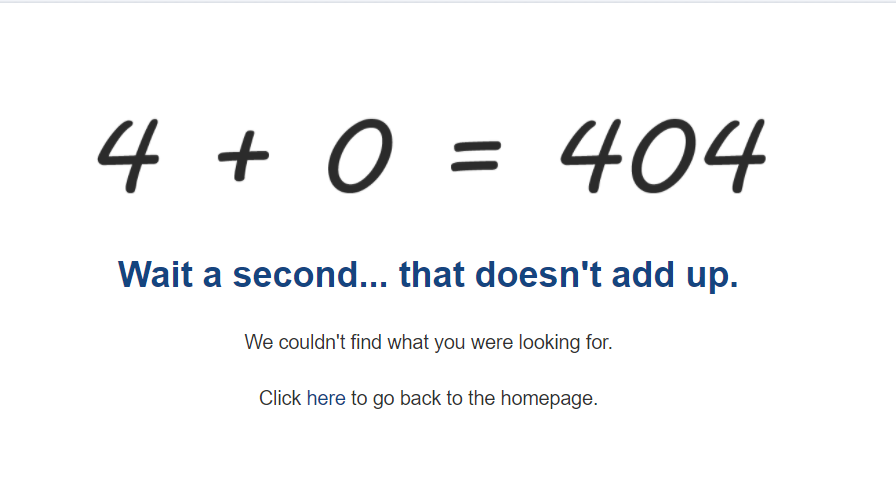Have you ever been on a website and clicked on a link only to be greeted with a big “Not Found” message?
Whenever you request to view a web page that no longer exists (or the URL is spelled wrong), the server will send you to a catch-all page for that website called the 404 page.
The 404 page is named after the “Page Not Found” error that you get when there is no page that matches the URL you entered. It’s literally a file or page named 404. You can go to any website and enter https://domain.com/404 and see what it looks like.
These 404 pages are another marketing opportunity, or at the very least, a chance to show some personality. For the sites we build for clients, we change the message to something related to math or accounting to make it slightly fun for the visitor.
Our most common 404 page says, “This doesn’t add up,” and displays a calculator as shown here:
Here are some other examples of 404 messages we’ve customized for client sites:
There’s even more opportunity to add a link to where you might want the visitor to go to. And a few extremely crafty internet marketers offer a product for sale on the 404 page. A happy medium might be to ask visitors to sign up for your newsletter.
A second thing you can do to monetize your 404 page is to view the history of activity that led to the visitor getting to the 404 page in the first place. After all, it is an error, and in some cases, needs to be fixed. For example, if you deleted or renamed a page that people expect to still be active, then you may want to recreate the page and set up a forward to the next most relevant page available.
One thing we always do for new clients with previously existing sites is to add “redirect pages” under any old page names that are not listed on the new site. That way, when visitors land on the old page (in the new site), they are immediately directed to the new replacement page instead of the 404 page.
The 404 page is not the most profitable part of your website, but it’s fun to know about and is an area to work on for the web owner that has done everything else to make their site pay off.










